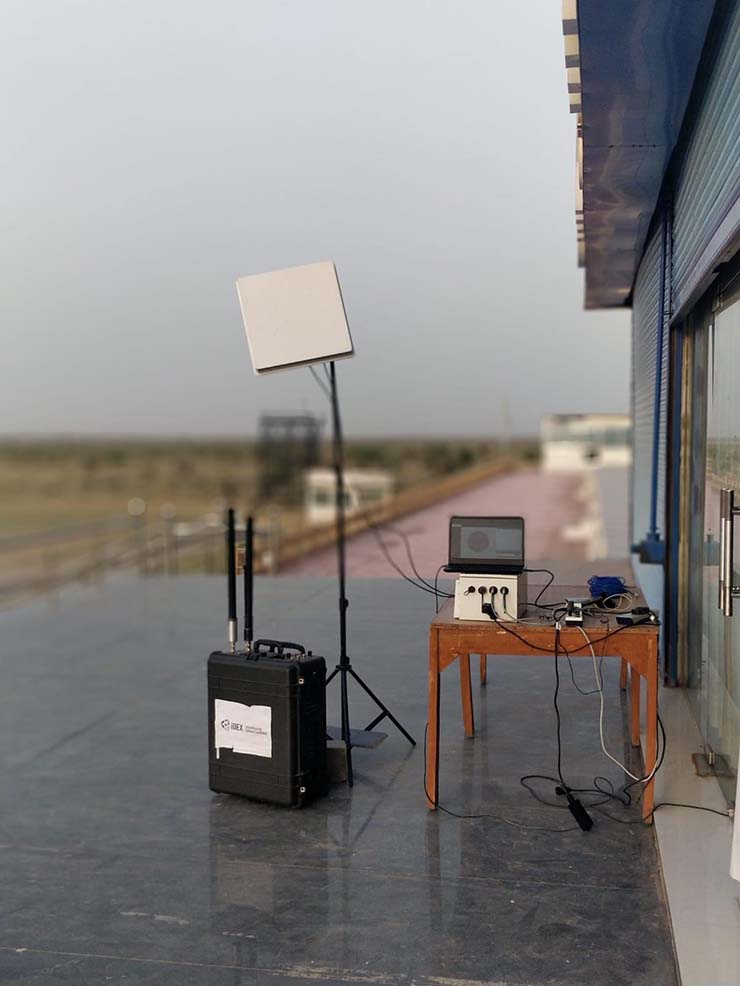Rising conflicts across the globe: Recently we have been witnessing several conflicts across the globe, including the ongoing conflict in Syria, which began in 2011 and has resulted in the displacement of millions of people, widespread destruction, and a humanitarian crisis. Tensions between the United States and Iran have escalated since the US withdrew from the 2015 nuclear deal and imposed sanctions on Iran. The ongoing conflict in Yemen, which has been described as the world’s worst humanitarian crisis. The military coup in Myanmar in 2021 has resulted in widespread protests and violence. The conflict between Israel and Palestine has been ongoing for decades and has resulted in numerous casualties and displacement of people. The Russian invasion of Ukraine in 2022 due to Geopolitical tension, Strategic interests and Domestic politics has led to huge losses. There is a never-ending great-power competition between nations, and sometimes within a nation. The persistent global conflicts have led to the ever-changing nature of warfare, and therefore the future is filled with eternal uncertainty. India too had various conflicts of its own after independence, such as the Indo-Pakistani conflicts since 1947, the Sino-Indian conflict of 1962, India-China border conflict of 2020, but it also has long-standing peaceful relationships with many countries, including the United States, Russia, Japan, and Israel, among others.
Does the advancement of technology have anything to do with the rising conflicts?
Technology – the Promises and Perils
There is no doubt that advancements in technology, such as quantum computing, artificial intelligence (AI) and digital surveillance, are transforming the military worldwide for future war preparedness. These technological advancements offer the promise of greater efficiency, speed, and accuracy in military operations, but they also pose significant perils. When a nation enhances its defence technology, several other nations see it as a threat and feel the need to develop something better for themselves. This has created a constant uncertainty among every nation, “whether they are secure enough or not”. Advancements in technology have clearly been one of the major driving forces behind this uncertainty.
On the other hand, technology has evidently transformed the way people live, and therefore it has the potential to create a need for change in policy and regulations. One of the significant perils is the potential for AI and other autonomous systems to malfunction or operate outside of human control. This issue has been highlighted by the United Nations in its warning about the dangers of autonomous weapons. If not appropriately managed, these technologies could create unintentional harm to civilians and cause a loss of human life.
Another peril is the increased use of digital surveillance, which raises concerns about the potential misuse of data, privacy, and human rights. The development of surveillance technology has advanced significantly, and it is being used for military operations, domestic law enforcement, and counter-terrorism operations.
The Indian Armed Forces have recognised the importance of modernisation, adopted innovation and technology, and adapted to disruptive and emerging technologies via the modernisation programme, while focussing on indigenisation via programmes such as ‘Innovation for Defence Excellence’ and ‘Technology Development Funds’.
Indian Armed Forces Modernisation Programme
The Indian Armed Forces have always embraced new technologies to stay ahead of the curve. For example, during the Kargil War in 1999, the Indian Army used unmanned aerial vehicles (UAVs) for surveillance and reconnaissance. This was one of the first instances where a military used UAVs in a conflict, highlighting India’s early adoption of new technologies in the field of defence. The Indian Armed Forces have recognised the need to constantly modernise and keep up with emerging technologies. The Indian Ministry of Defence has implemented several initiatives to enhance modernisation, innovation, and digitisation across the armed forces. These initiatives have aimed to enable the Indian Armed Forces to become more self-reliant and technologically advanced.
In recent years, India has continued to invest in advanced technology to improve its military capabilities. For example, India has been developing the Tejas, an indigenously developed fourth-generation fighter jet. The Tejas incorporates a number of advanced technologies, including advanced avionics, fly-by-wire controls, and composite materials. It is expected that the Tejas will be a game-changer for the Indian Air Force, providing it with a state-of-the-art platform for air superiority.
India is also investing in the development of hypersonic technology. Hypersonic weapons are those that can travel at speeds of Mach 5 or greater, making them extremely difficult to detect and intercept. India is currently working on developing hypersonic cruise missiles and hypersonic glide vehicles, which will give it a significant advantage over its adversaries in the event of a conflict.

Indian Armed Forces are also improving their cybersecurity capabilities rapidly. With the increasing use of digital technologies in military operations, cybersecurity has become a critical concern. India has established the Defence Cyber Agency to protect its critical infrastructure from cyber threats. The agency is responsible for monitoring and responding to cyber-attacks on the military, and it works closely with other government agencies to ensure that India’s digital infrastructure is secure.
The Indian Navy has also been embracing new technologies to improve its capabilities. In 2016, India commissioned its first indigenously built aircraft carrier, the INS Vikrant. The INS Vikrant is equipped with advanced sensors, communication systems, and weapons, making it one of the most advanced aircraft carriers in the world. It is capable of carrying a variety of aircraft, including fighter jets, helicopters, and unmanned aerial vehicles. The Indian Navy has engaged with various start-ups for the development of niche products and solutions that are hard to come by, like the non-lethal way of stopping a large ship in the ocean, a superior firefighting compound that works with seawater, advanced drones with artificial intelligence etc.
The Make in India initiative continues to encourage private sector participation in the defence industry and a self-sufficient defence ecosystem is emerging. The Make in India initiative has also promoted innovation. The Aatmanirbhar Bharat Abhiyan (Self-Reliant India Campaign) is also promoting indigenous manufacturing and reducing the dependence on foreign imports. The Indian Armed Forces have also adopted the Aatmanirbhar Bharat Abhiyan, with a focus on procuring critical defence technologies from indigenous sources.
Adaptability to Emerging Technologies
The Indian Armed Forces have also recognised the importance of adaptability to emerging technologies. The future battlefield will be characterised by the integration of advanced technologies such as AI, quantum computing, and unmanned systems. The Indian Armed Forces have begun to incorporate AI and machine learning into their operations, with a focus on enhancing situational awareness, speed, and accuracy. AI can be used in a number of ways, including for intelligence gathering, threat analysis, and decision-making. India is currently developing a range of AI technologies for its military, including unmanned aerial vehicles (UAVs) that can operate autonomously and make decisions based on the data they collect. The Indian Air Force is also using AI to develop advanced air defence systems that can respond to threats in real-time.
Blockchain technology is being implemented by the Indian Armed Forces. This is a decentralised digital ledger that is capable of recording transactions between two parties securely and transparently. It has various applications in the military, including supply chain management, secure communication, and the development of smart contracts. The Indian Army has been conducting experiments with blockchain to improve its logistics and supply chain management, and it is expected that blockchain will soon be used more widely by the military to improve its efficiency and security.
In conclusion, as global politics becomes more complex and uncertain, India’s commitment to technological innovation and modernisation will be critical in maintaining its position as a leading global power. The Indian Armed Forces are taking a number of steps to modernise their capabilities and become a stronger, more agile force. Advances in technology are playing a critical role in this effort, from the development of next-generation fighter jets to the use of blockchain to improve supply chain management. With continued investment in technology and a commitment to innovation, the Indian military is poised to become a leading force in the new world order.
-The writer is a serial entrepreneur and co-founder of Big Bang Boom Solutions and currently heads the Research and Product Development functions of BBBS. With over 50 international publications and multiple patents, he was instrumental in the establishment of the SAIF, the Nanotechnology Research Centre and the Brain Computer Interface Research Centres at SRM University. He also co-founded an “edtech” startup and successful exited it at a higher valuation.
















